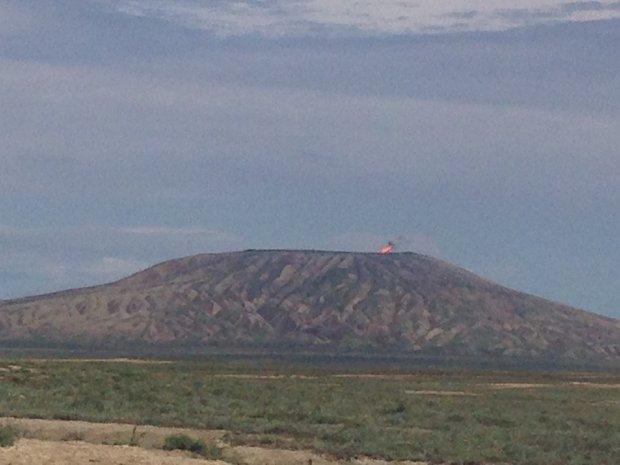Azerbaijan to appeal UNESCO for new World Heritage inscriptions Unique mud volcanoes are on the list / PHOTO-VIDEO
The government of Azerbaijan intends to appeal to UNESCO for the inscription of the country’s unique mud volcano site on the World Heritage List.
The country’s Ecology and Natural Resources Minister Mukhtar Babayev said the application letter would include the Hirkan National Park and the Gobustan mud volcanoes.
“We're hoping to gain World Natural Heritage status for some of our natural sites — the Hirkan National Park in south-east Azerbaijan, which includes a forest of ancient relict trees and leopard habitat, and for a very different area too — the mud volcanoes south-west of Baku,” he told EUobserver.
Mud volcanoes are among uncommon natural sites to see in Azerbaijan. They are located mainly 76 kilometres (47 miles) southwest of the country’s capital Baku, in the Gobustan settlement.
According to global statistics, 300 out of 800 mud volcanoes registered in 26 countries across the world are located in Azerbaijan. The number of mud volcanoes in the country, their morphological features, high activity, and appearance are catching sight as second-to-none samples of their kind. Due to the distinguished uniqueness of its volcanoes, Azerbaijan is called the "land of mud volcanoes".
While most of them are classified as active, the height of some of Azerbaijan’s mud volcanoes exceeds 400 meters, including the Toraghay volcano, which is considered the world’s largest thanks to its morphometric features. Also, the Otman Bozdagh volcano in Gobustan takes the back seat to Toraghay as the second-largest around the world. Around 40 mud volcanoes in Azerbaijan release a lot of oil on the surface of the earth, which helps geologists locate fossil fuel accumulations beneath the ground.

The Otman Bozdag mud volcano was seen erupting in 2018
Meanwhile, in addition to volcanoes in Gobustan, there are also underground and marine mud volcanoes in Azerbaijan, including 140 subsea mud volcanoes in the Caspian Sea. Eight islands in the Baku archipelago are said to be of mud volcano origin.
According to various sources, the first activity of mud volcanoes in the territory of modern-day Azerbaijan dates back to approximately 25 million years ago. Since 1810, 50 volcanoes have erupted at least 200 times in the country.
The last known eruption of a mud volcano in Azerbaijan was observed in July 2021 at the Dashli Ada (Rocky Island) island in the Caspian Sea. Then, the eruption was seen to continue for eight minutes. In 2018, both Toragay and Otman Bozdag volcanoes also erupted.
Meanwhile, mud volcanoes in Azerbaijan have been extensively studied and their therapeutic value has been confirmed. Volcanic mud is also of special importance in medicine. Thus, volcanic mud is widely used in the treatment of many diseases, including the gastrointestinal, peripheral and central nervous systems, gynaecological, urological, joint, radiculitis, and skin and throat pain.








